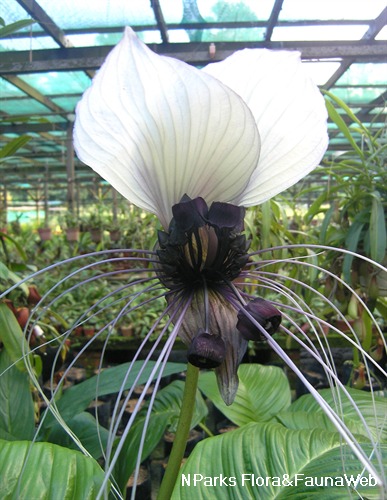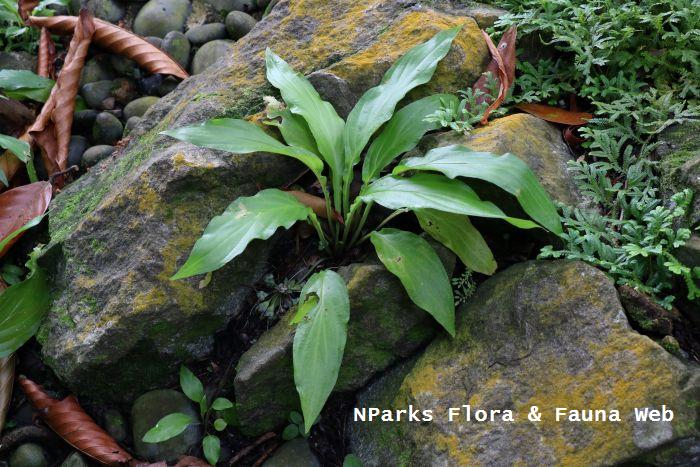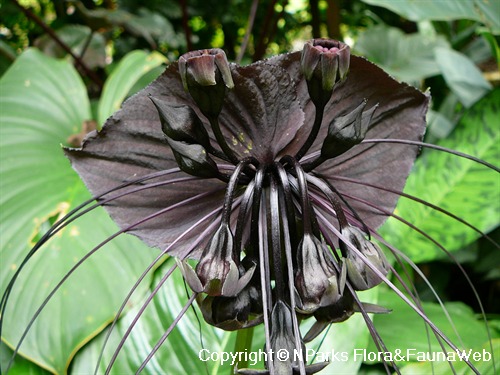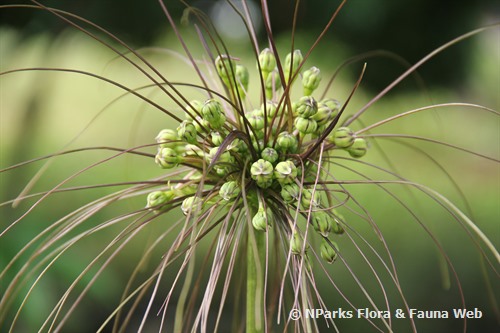
Back
Tacca leontopetaloides (L.) Kuntze
| Family Name: | Dioscoreaceae |
| Common Name: | Indian Arrow Root, Tahiti Arrowroot, Lukeh, Likir, Lukih, Condang, Kacunda, Kecondong, 蒟蒻薯 |
Name
Classifications and Characteristics
| Plant Division | Angiosperms (Flowering Seed Plants) (Monocotyledon) |
|---|---|
| Plant Growth Form | Herbaceous Plant |
| Lifespan (in Singapore) | Perennial |
| Mode of Nutrition | Autotrophic |
| Plant Shape | Irregular |
| Maximum Height | 1 m |
Biogeography
| Native Distribution | Africa, Tropical Asia (including Singapore), Australia, and Pacific Islands |
|---|---|
| Native Habitat | Terrestrial (Coastal Forest), Shoreline (Backshore, Sandy Beach) |
| Preferred Climate Zone | Tropical |
| Local Conservation Status | Native to Singapore (Critically Endangered (CR)) |
Description and Ethnobotany
| Growth Form | It is a perennial herb consisting of an underground tuber-like stem (rhizome) from which up to 3 long-stalked leaves arise. |
|---|---|
| Foliage | Its many-lobed leaves have leaf blades that are broadly drop-shaped, egg-shaped, or oblong-egg-shaped. Each lobe is up to 70 by 120 cm. |
| Flowers | Its flowering shoot has a long stalk up to about 2 m tall, and bears up to 40 drooping flowers at the top of the stalk. There are about 10, light to dark green, leafy bracts, and many purple or dark blackish-brown, thread-like bracts that are found close to the flowers. |
| Fruit | Its fruits are mostly round berries, up to 3.5 by 1.5–2.5 cm, pale orange when mature, and contain many seeds. Its ribbed seeds are yellowish-brown, flat, round, and 3–5 mm wide. Its seeds are also covered by a white, spongy covering. |
| Habitat | It grows in coastal vegetation, and on sandy beaches, usually below 200 m altitude. It occurs locally in Pulau Pawai and Pulau Semakau. |
| Associated Fauna | Its flowers are insect-pollinated. |
| Cultivation | It can be propagated by seed or tubers. |
| Etymology | Latin tacca, from the Indonesian name, taka; Latin leontopetaloides, with petals similar to that of a lion |
| Ethnobotanical Uses | Edible Plant Parts : Edible Stems Food (Fruit or Vegetable): The tubers are edible after proper cooking, and are a good source of starch. Others: The plant is cultivated as an ornamental shrub for its leaves and attractive flowering shoot. The stems are used to manufacture hats as they make good braiding material. |
Landscaping Features
| Landscaping | It is suitable for coastal parks or sunny spots with sandy, well-draining soils. |
|---|---|
| Desirable Plant Features | Ornamental Flowers, Ornamental Foliage, Ornamental Fruits, Ornamental Form |
| Landscape Uses | Coastal, Parks & Gardens, Beachfront / Shoreline |
Fauna, Pollination and Dispersal
| Pollination Method(s) | Biotic (Fauna) |
|---|---|
| Seed or Spore Dispersal | Abiotic |
Plant Care and Propagation
| Light Preference | Semi-Shade |
|---|---|
| Water Preference | Moderate Water |
| Rootzone Tolerance | Well-Drained Soils, Saline Soils / Salt Spray |
| Propagation Method | Seed, Storage Organ |
Foliar
| Foliage Retention | Evergreen |
|---|---|
| Mature Foliage Colour(s) | Green |
| Foliar Attachment to Stem | Petiolate |
| Foliar Shape(s) | Non-Palm Foliage |
| Foliar Margin | Palmately Lobed |
| Leaf Area Index (LAI) for Green Plot Ratio | 3.5 (Shrub & Groundcover - Monocot) |
Non - Foliar and Storage
| Specialised Storage Organ(s) | Underground (Stem Tuber) |
|---|
Floral (Angiosperm)
| Flower & Plant Sexuality | Bisexual Flowers |
| Flower Colour(s) | Green |
|---|---|
| Flower Grouping | Cluster / Inflorescence |
Fruit, Seed and Spore
| Mature Fruit Colour(s) | Orange |
|---|---|
| Fruit Classification | Simple Fruit |
| Fruit Type | Fleshy Fruit , Non-Accessory Fruit |
Image Repository
Others
| Master ID | 1198 |
|---|---|
| Species ID | 2491 |
| Flora Disclaimer | The information in this website has been compiled from reliable sources, such as reference works on medicinal plants. It is not a substitute for medical advice or treatment and NParks does not purport to provide any medical advice. Readers should always consult his/her physician before using or consuming a plant for medicinal purposes. |


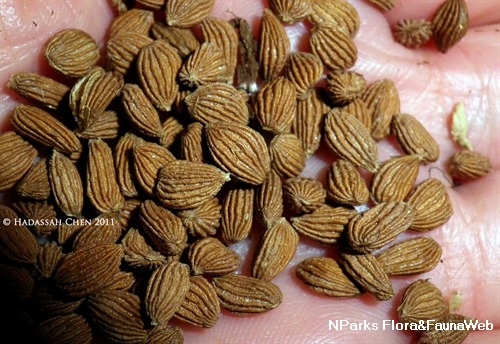
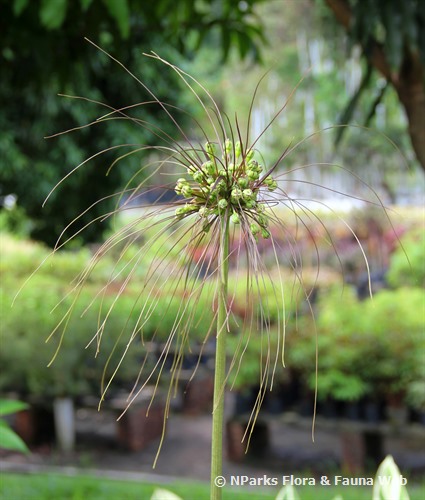
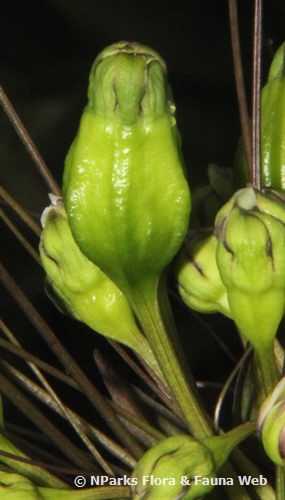
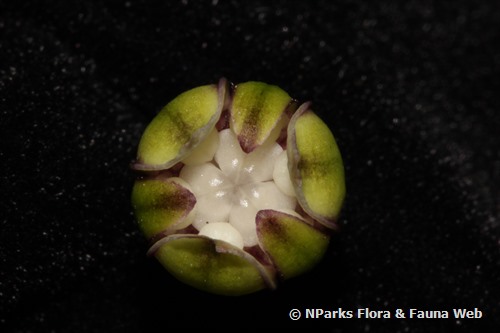
.jpg)
.jpg)
.jpg)
.jpg)
